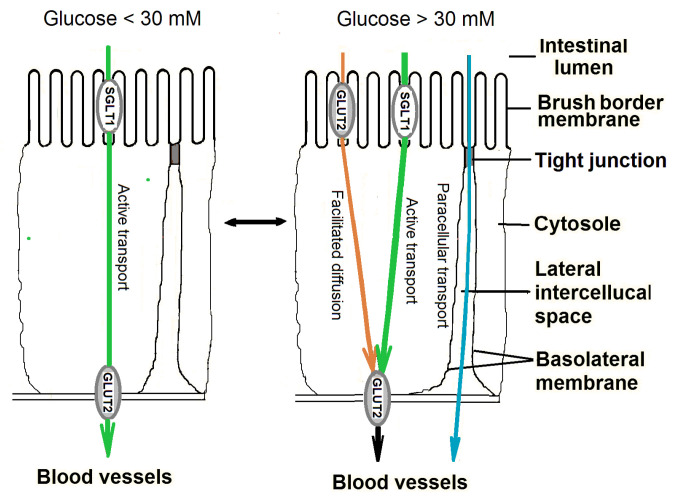Figure 1.
Molecular pathways of glucose absorption in the small intestine. Preferential localizations of SGLT1 and GLUT2 transporters in the brush border and the basolateral membranes of enterocytes determine the rate of glucose absorption under low (<30 mM) and high (>30 mM) luminal glucose concentrations in healthy conditions. In both ranges, changes in glucose absorption mechanisms are part of both fast and slow adaptive responses to dietary carbohydrates. These mechanisms are also under the modulatory effects of intestinal peptide hormones and potentially probiotics (see below). The same glucose absorption pathways and localization of SGLT1 and GLUT2 transporters are present in type 1 and type 2 diabetes, but in latter case, SGLT1-mediated glucose uptake is increased [11,12,13,14,15,16,17,18,19,20,21,22], and paracellular glucose transport in the water flux also appears to increase (see below). As for the facilitated diffusion of glucose through the apical membrane by GLUT2, the data are inconsistent [16,17,20,21,23].

